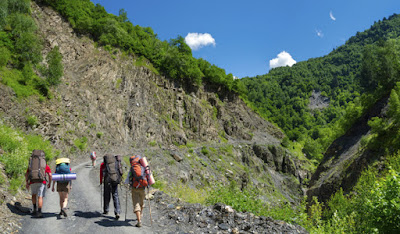 |
| David Scott Memorial .triphobo.com |
 |
| Shillong: David Scot Trail. MakeMyTrip |
A commemorative monument is erected in Saitsohpen, Sohra in honor of David Scott, A glowing tribute in the stone inscription on the pillar by the British Raj goes as follows:
"By his demise the government has been deprived of a most zealous, able and intelligent servant, whose loss it deeply laments, while his name will long be held in grateful remembrance and veneration by the native population, [Come ON!!! Absolutely wrong!!!] to whom he was justly endeared by his impartial dispensation of justice."
A massive brick structure - memorial built in honor of David Scott is standing high in the land of rain - Cherrapunjee. The mountainous expanse of Meghalaya and the surrounding terrain is mesmerizing. The obelisk is made of ashlar stone masonry raised over a square platform. An inscription is engraved on the memorial pillar.
 |
| Brainy Quote |
 |
| Jantoo Cartoon |
 |
| Shillong: David Scot Trail. Tourism of India |
David Scott Trail is one of the most popular trekking routes in Meghalaya state and countless hikers use this trail/path established by David Scott. In the early 1800s, it was widely used by people, traveling from Assam to Bangladesh and total length of this historical trail is over 100 km and normally it takes about five days to cover the distance. In those days, the British workers and others covered long distances on horse-back, part on foot. The best known existing portion of this horse track is located between the villages of Mawphlang and Lad Mawphlang. The trail takes you across the beautiful terrain of East Khasi Hills and covers around 16 km. When you go for a long hike, using this trail you will run into a variety of terrains that have streams, waterfalls, meadows, sacred groves, valleys and Khasi villages, etc. You have to cross them carefully. People in groups normally set up camps on the way for relaxation, rest and food. While hiking, you will be overwhelmed by the captivating green rocky cliffs, rolling greenish hills in the Umiam valley. The ideal time is in the months of October and November, right after the monsoons and when the climate is favorable. Incidentally, a part of this state is known to receive the highest rain fall in the world.
02. Near Shillong, you can enjoy visiting old colonial bungalows Polo Ground and participating in the age-old game of teer (archery). Khasi cuisine of jadoh (red rice) and pork in Trattoria, available in local joints is native to this place.
03.Privately-owned Butterfly Museum at Riatsamthiah.
04. The Rhino Heritage Museum is an interesting one Once an ammo store and dungeon for Japanese POW during WWII it takes back to the last crucial world war and shows glimpses of the Indian Army’s successful defense of the invading Japanese soldiers.


.jpg)

.jpg)





